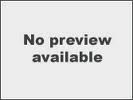Sooke FireSmart Program
British Columbia has experienced unprecedented wildfire seasons in recent years. The changing climate, higher temperatures and drought conditions are all leading causes of aggressive fire behaviour and longer wildfire seasons. Living in a fire-prone ecosystem means we must implement wildfire mitigation strategies to reduce our wildfire risk and protect our community.
Fires on the coast can be vigorous especially in steep/difficult terrain and/or in drought-stricken areas. Lightning storms and water shortages are becoming more common during the summer months and impact both fire behaviour and response operations on the coast.
Preparing for the threat of wildfire is a shared responsibility from homeowners, to businesses to government. We all have the responsibility to reduce our risk and increase our wildfire resiliency.
What is the Risk? The Wildfire Risk Framework used in BC supports initiatives related to wildfire risk reduction. The largest threat to Sooke is wildfire as our community is currently classified in the highest risk category.
This framework measures risk and considers the likelihood of a wildfire event, community consequences, and impacts to high-value resources and assets. By identifying these risk levels, we can prioritize mitigation efforts and increase community resiliency to wildfire.
What is the Structure Ignition Problem? Many homeowners falsely assume there is no wildfire threat to their home and property if not directly on the forest’s edge or in contact with flames. Embers and burning debris can easily travel up to two kilometers ahead of a wildfire and ignite materials on or near your home. This can cause severe damage or total home loss.
Most homes destroyed during a wildfire event are from embers, and surface fires that have not yet reached the crown of the trees. Once homes or adjacent materials begin burning, these residential fuels burn at a higher intensity. The fire will then continue to spread rapidly throughout the community igniting multiple structures simultaneously through direct flame, radiant heat, and casting of shorter ranged embers. No longer influenced by the original wildfire, this urban fire will continue to burn residential fuels and flammable materials.
What is FireSmart? Being FireSmart is about living and co-existing with wildfires because it’s not a matter of if, but when. It’s a tool designed to reduce the likelihood of large uncontrollable, high intensity wildfires within the Wildland Urban Interface.
Recent science and studies have shown that overtime, FireSmart principles can significantly reduce the risk related to losses in the most extreme wildfire conditions. Laboratory testing, physical modeling and recent wildfire events have increased our understanding of structural ignitions and fire behaviour such as radiant heat transfer and the flammability of different building materials.













